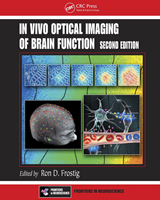NCBI Bookshelf. A service of the National Library of Medicine, National Institutes of Health.
Frostig RD, editor. In Vivo Optical Imaging of Brain Function. 2nd edition. Boca Raton (FL): CRC Press/Taylor & Francis; 2009.
These are exciting times for the field of optical imaging of brain function. This field has continued to rapidly advance in both its theoretical and technical domains, and its contributions to brain research continue to considerably advance our understanding of brain function. Thus, the description of these techniques and their applications should be attractive to both basic and clinical researchers who are interested in brain function. The comparison between this edition and the previous edition of the book (CRC 2002) serves as a good indicator for the continuing rapid growth of the field. In contrast to the previous edition consisting of 9 chapters, the current edition contains 15 chapters—9 new and 6 thoroughly revised. Further, some of the imaging techniques described in the new chapters did not even exist when the previous edition was published!
This book brings together a description of the wide variety of optical techniques available for the specific study of neuronal activity in the living brain and their application for animal and human functional imaging research. These in vivo techniques can vary by their level of temporal resolution (milliseconds to seconds), spatial resolution (microns to millimeters), degree of invasiveness to the brain (removal of the skull above the imaged area to complete noninvasiveness), use of signals intrinsic to the brain versus use of external probes, and their current application to basic and clinical studies. Besides their usefulness for the study of brain function, these optical techniques are also appealing because they are typically based on compact, mobile, and affordable equipment, and can therefore be more readily integrated into a typical neuroscience, cognitive science, or neurology laboratory, as well as a hospital operating room. The chapters of this book describe the theory, setup, analytical methods, and examples of experiments that highlight the advantages of the different techniques. With the growing sophistication of the hardware, there is a parallel growing sophistication of the software. Therefore, with this edition, I have included a chapter dedicated to the description of principles of a software system, in the same way that other chapters describe the principles behind hardware, and I foresee that such chapters becoming more prevalent in the future.
Because this book focuses on in vivo imaging techniques, examples of the applications are focused on living brains of animals and humans rather than tissue cultures or brain slices. In addition, this book focuses on optical imaging techniques and consequently does not include nonoptical techniques of functional brain imaging such as fMRI, PET, and MEG techniques.
I have no doubt that the study of brain function using optical imaging techniques, as described in this book, will continue to expand and flourish in the future. The interest in these methods coupled with a continual rapid pace in relevant theoretical and technological advances should ensure that these techniques not only remain but also increase their dominance as major players of future brain research.
Ron Frostig, Ph.D.
Irvine, California 2008
- Preface - In Vivo Optical Imaging of Brain FunctionPreface - In Vivo Optical Imaging of Brain Function
- Life History And Evolution - C. elegans IILife History And Evolution - C. elegans II
- Biology of Prostate Cancer - Holland-Frei Cancer MedicineBiology of Prostate Cancer - Holland-Frei Cancer Medicine
- Total Knee Replacement: Summary - AHRQ Evidence Report SummariesTotal Knee Replacement: Summary - AHRQ Evidence Report Summaries
- Introduction - Low Back PainIntroduction - Low Back Pain
Your browsing activity is empty.
Activity recording is turned off.
See more...
